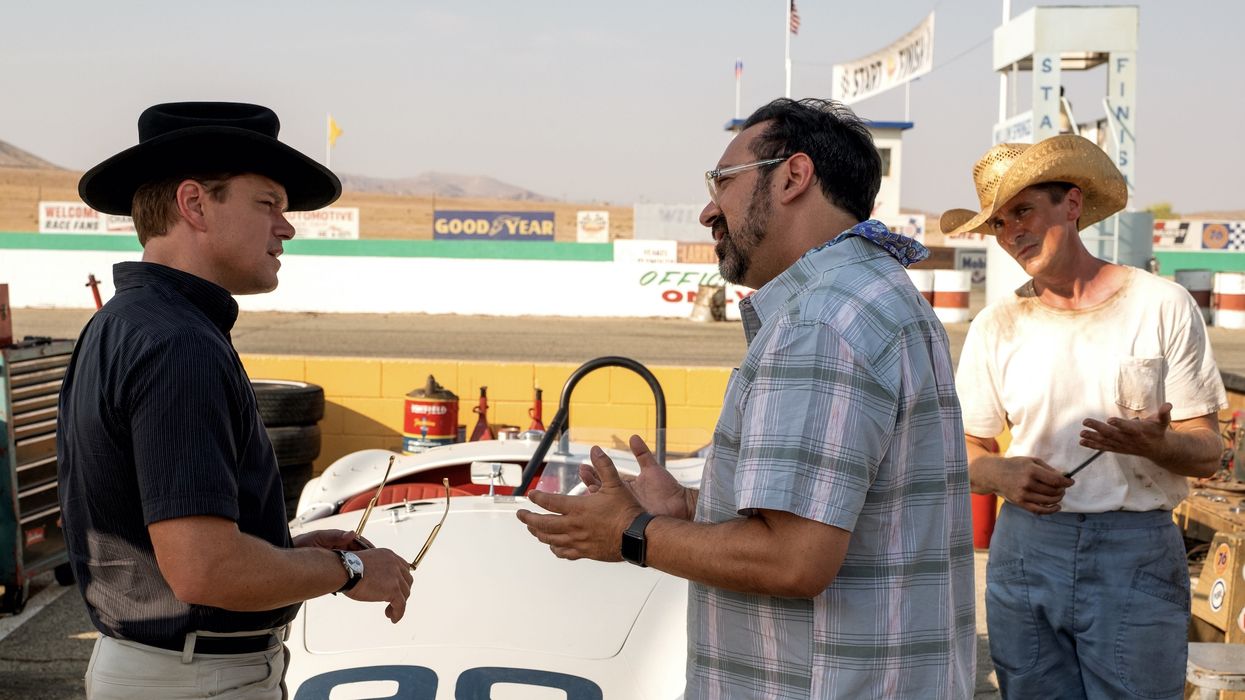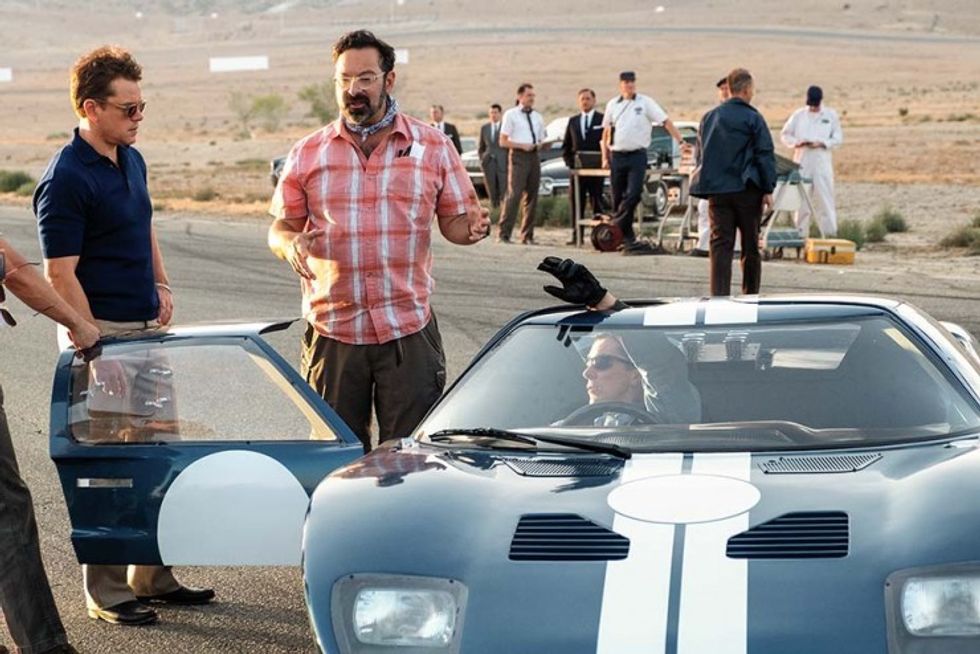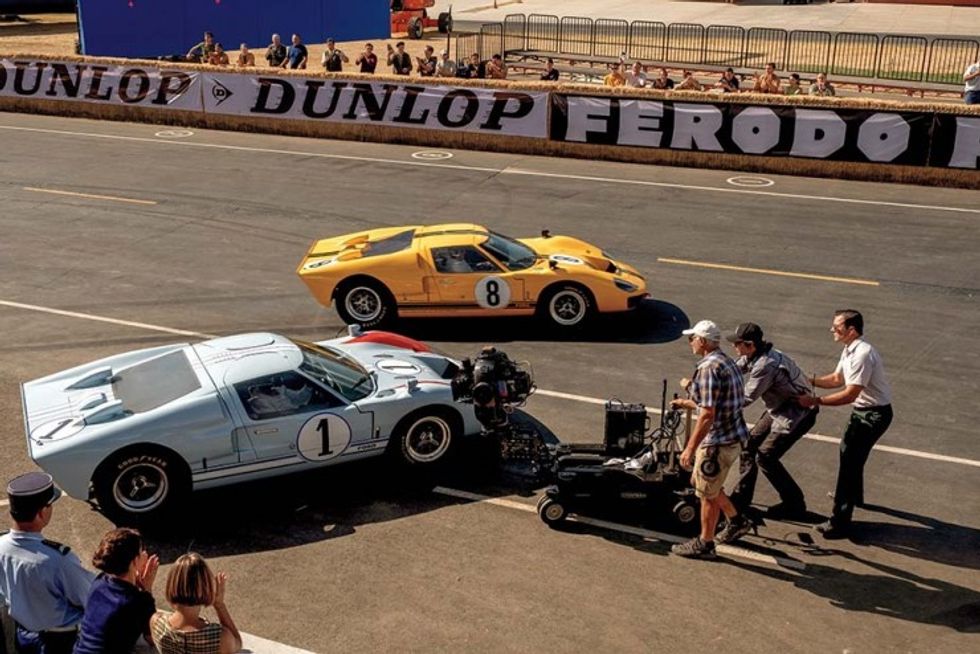How 'Ford v Ferrari' Survived Development Hell Will Inspire You
James Mangold's Ford v Ferrari opened No. 1 at the box office over the weekend, on its way to (likely) many Oscar nominations. Here's how the director, actors Matt Damon and Christian Bale, and the expert film crew pulled it off.

Ford v Ferrari is further proof that studio execs often don't really know what they are doing.
Or what you want.
The movie, which chronicles the high-octane (and often very funny) rivalry between car moguls Henry Ford II and Enzo Ferrari, took the better part of a decade to get out of development hell before James Mangold came aboard. (Michael Mann was long attached to direct, but stepped aside and took an executive producer credit). Mangold, coming off 20th Century Fox's hit 2017 movie, Logan, worked with Mann's team of screenwriters -- brothers Jez and John-Henry Butterworth -- to take a pass at the script to craft a movie that was an uphill battle in the IP-minded climate of studio filmmaking. The $97 million dollar film for adults, in a market that usually prefers blockbusters targeting the Happy Meal toy demo, proved that audiences want something new -- even it is based on real events. Mangold knew that the financial return on Fox's investment (and, now, parent company Disney's) was less certain than, say, on a Marvel tentpole movie. But thanks to rave reviews and a rare A+ CinemaScore from audiences, the gamble paid off. Studio execs should pay attention.
Thanks to The Hollywood Reporter, we have an in-depth look at the behind-the-scenes process that went into making one of the year's best films.
Mangold's Original Pitch
The original script's author, Jason Keller, completed his first draft in 2009. Keller's original story reportedly centered on both the Ford and Ferrari teams -- a very expensive scenario that would ultimately result in the film spinning its wheels in development.
Mangold, with the help of Fox's President of Production, Emma Watts -- whom he worked with on 2005's Oscar-winning Walk the Line -- made an "eager but honest" pitch for the movie. He admitted he wasn't a "car guy" and he was game to explore telling a story in a world that was foreign to him. What compelled him to learn something new at the cost of nearly $100 million was the relationship between Shelby and Miles. As Mangold put it: "You have an aging, great driver with a smart mouth — Miles — who can't get along with authority," Mangold explains. "And then you have Shelby, who is a great race car driver who can't drive anymore because of a heart condition, but who is very good at politics. I found their yin-yang relationship interesting."

The project veered in and out of various tiers of Development Hell for more than ten years. In addition to Mann, Tron: Legacy helmer Joseph Kosinski was attached to direct at one point -- and talent like Tom Cruise and Brad Pitt circled the lead roles.
Mangold and his writing team managed to zero-in on what the story needed: Focusing more on the dynamic between former Le Mans winner Carroll Shelby (Damon) and the British driver he tasks with winning the race for Ford II, the eccentric and filterless Ken Miles (Bale).
By dialing up the two characters' core relationship with banter and tension, and building the story on their backs, it helped Mangold deliver on his intent to make the film with a more practical approach. Especially having come off the CG-heavy Logan. While the movie does employ CG during the car races, the production emphasized practical sets and driving scenes. (Locations in California and Georgia stood in for Le Mans, France, where the actual race took place.)
The risk of executing a mostly practical production on this scale was not lost on its filmmaker. But his commitment to making more adult-minded fare like this -- similar to the mid-budget studio movies we used to get all the time in the '90s and early 2000's -- is to help these types of film not become anymore of a lost art than they already are.
"Obviously, movies like this are scary to studios," Mangold says. Its material has no inherent IP or audience base other than perhaps the auto-racing world. Bale thinks the chaos and uncertainty that surrounded the Fox acquisition was probably fortuitous. "The unknown of what was about to happen and who would have a job invoked an attitude of 'Let's go out with a bang!' " he says. "That's what finally got this movie made. It had been around for a while."

To help mitigate cost and risk for Fox, Chernin Entertainment came aboard to producer. Moreover, Mangold and the Butterworths went to work cutting any expensive "fat" -- much like Shelby and Miles work to streamline their cars to be as effective as possible.
"Every time we worked on it, it was like meeting an old friend," Jez told THR. "He wanted to reshape to make it much more about the two central characters, Shelby and Miles."
What You Can Learn
When a project gets a "No," that doesn't 100 percent mean "No" as in "forever." It can mean "no, not right now."
The fact that this movie survived the back and forth of traditional Development Hell, and a studio merger during a time when movies like this rarely (if ever) get made, it nothing short of miraculous or a revolutionary act. It's early box office success should send studios searching their script stacks for similar projects that appeal to similar audiences. Giving life to another movie in a way Ford capitalized on. And in a way that you can, too; don't give up on yourself. Or your own movies or TV shows.
You never know when that "no, not right now" can turn into a greenlight.
Source: The Hollywood Reporter












